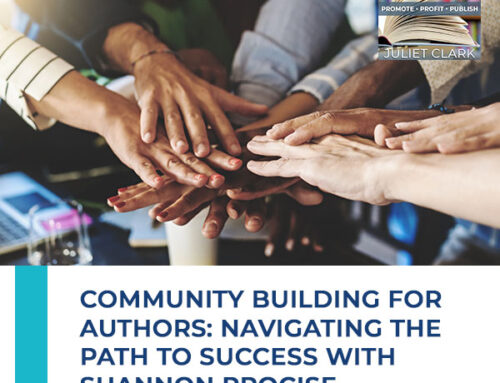
Getting in touch with your ideal clients undoubtedly allows you to offer the best that you can without being declined in your offer. One of the great trends being used by many speakers to do this in the current marketplace is a quiz. In this episode, Juliet Clark tackles this tool and discusses its great benefits. Naming it as a lead generation system, she talks about how a quiz helps speakers who are struggling to find clients to talk to. She also details the skills you need when engaging in the enrollment conversation. Get to know your clients’ wants and needs and know how you can help them better in today’s show.
—
Watch the episode here:
Listen to the podcast here:
Getting To Know Your Ideal Clients Through A Quiz
I want to talk about something we saw out in the marketplace. We have a lot of speakers out using Quiz to Qualify, our platform that captures the room and helps you determine who is ready for sale now, who needs nurturing and who doesn’t. For those of you who don’t know how to work, we have a proprietary assessment platform that sets up success principles and allows your audience to be able to gauge where they’re at in relationship to what success looks like. This has been a big seller for speakers because it allows authors, coaches and speakers to not only get into the finiteness of what their ideal consumer looks like because that consumer is telling them over and over where they’re struggling, who they are and what they’re doing.
It also is a lead generation system because we have questions on there that determine high, medium and low commitment level. This is important for a lot of people out there who are struggling, especially coaches I hear over and over. I talk to people all day long and they can’t afford my system. It helps you determine who you talk to. Because remember when we’re selling, whenever we’re in a position where we’re convincing, we’ve already lost the sale. We have to be able to build a relationship and nurture these people into that sale. What we’ve been seeing in the marketplace with it is we’ve had some very large paid speakers use the platform. One thing that stood out for us was that they got great results. One of them was in a room of 70 people, 61 people took the quiz. Mind you, we use the quiz as a replacement for a lead magnet.
The reason we do that is that old paradigm of a lead magnet does not give us any consumer information. We have for a very long time considered a lead magnet an exchange of information. I’m going to give you my piece of genius, which may be a blueprint or an eBook or a video series in exchange for an email address and your name. Unfortunately, because not as many people are opening the email as they used to. The rates are going down lower and lower. We’re not connecting with those people and building personal relationships. Using the assessment platform in the right way is a replacement because people get to see where they are in relationship to what success looks like. You get patterned information about your consumer as well as lead generation leading to actual conversations to build relationships.
The more you actively listen to clients, the more you will know exactly what questions to ask. Share on XWe’re going back to our client who used this system with a lot of success, about 70 people in the room. 61 people took the assessment. It’s a two to three-minute experience. Of those, 48 of those 61 identified themselves as high commitment and struggling and needing help. What that meant was that 80% to 85% of the room that identified themselves as high commitment. That’s a pretty high level. Usually, we see around 30% to 40% identify as high level. From there, fifteen people scheduled that appointment on the spot and then the sales team followed up with the other 33 that were high commitment. We’re able to set up appointments with a significant number of those as well. The whole point of this is to create that shift from calling an email a relationship to starting to have conversations.
I like to liken marketing to dating. Imagine if you were dating and you emailed back and forth for six, seven months or years even or it was the one-sided email. You wouldn’t call it a relationship. However, when you’re having conversations when you’re talking to people and finding out their wants and needs, then a relationship can start. What we noticed from this and two other of the speakers that have terrific results was that they weren’t able to get into the enrollment conversations. We noticed this last year and started teaching it in our course. For these particular speakers, these were done for us who hadn’t gotten into that actual enrollment conversation. I want to talk a little bit about enrollment conversations and why they’re so important and how we put them together in a way that is meaningful for the person on the other end of the line who’s struggling.
I want to start that conversation by getting clear on one of the mistakes that one of our people made. A 30-minute conversation, he spent the first ten minutes establishing his credibility. The truth is he is a very well-known speaker. He’s in the Speaker Hall of Fame with the NSA. For people who signed up, they already saw him speak, they knew was credible. That was something that he didn’t need to spend ten minutes doing. He could go into what I call Triple-A skills. The conversation would look something like welcoming that person to the call, thanking them for their time, you know it’s valuable. Getting into the Triple-A skills. What I called Triple-A skills are active listening, asking powerful questions and then affirming and acknowledging. This is all important.
Unfortunately, with all of the chatter and devices we have out there on our desk on a daily basis, I have an iPad, I have two computers and I have a phone, it’s hard to engage in active listening. Especially if you have people coming through the door too. You have staff as I do. What you want to do with active listening is, first of all, spent 100% of your focus on the prospect. No outside distractions. The second thing you want to do is listen to beyond the words, hearing what they’re saying. A lot of times what is coming out of someone’s mouth is not the underlying problem. That’s where we’re going to get to asking powerful questions. The more you do this, the more you will know exactly what questions to ask because you’ll start to see reoccurring patterns here as well.
There’s almost code for I don’t have money or code for it didn’t work because I wasn’t present to the conversation or wasn’t present to the group. I do want to mention that too. We’ve had a lot of our clients beating themselves up because people pay for their program and then they don’t show up. It’s pretty common and it always shocks me that people pay several thousand dollars to be a part of a program and then not be fully present to what they’re there to learn inside the program. Listen for those words inside of there. Because this is as much in a good enrollment conversation is as much about you choosing them as them choosing you.
You choosing them means that you go from powerless, “I need money,” to powerful, “I’m going to take the right clients. I’m going to take the clients that are enthusiastic. I’m going to take clients that are doers.” It puts you in a much better position to serve your people. As a part of this process, resist the need to comment. Comment as little as you can. We don’t want any judgment here because we want this person as part of the enrollment conversation to feel very supported in this prospect. What this also does when we’re actively listening is it allows the prospect to feel that their feelings are being respected. It gives you a chance to find out what is going on. Why they successful with that last coach or why isn’t what they’re doing working? A lot of times when I talk to people, I can fare it out right away that what they’re doing is task–oriented, it’s not authentic oriented. What I mean by that is they’re not showing up authentically in the world. They’ve read a book that tells them to do A, B, C and D and it’s the way they’re doing it. They’re doing all the right things, but they’re doing them wrong. Looking for love in all the wrong places.

Knowing Your Ideal Clients: During the enrollment conversation, make clients feel heard and understood because somewhere along the line, they haven’t been.
Then be sure that you let them share more. I think this was one of the big mistakes that the person I was talking about that sold himself for the first ten minutes did is there needed to be more sharing on the prospect’s part and less sharing on the business owner’s part. What we’re doing here is threefold. We’re allowing the prospect to stay in their pain a little bit longer. Remember, selling is emotional. We want the prospect to be as emotional as possible. By doing that, we have to allow them to stay in that pain, to sit in it, if you will. We want to be taking active notes because when we’re done letting them stay in their pain for a few minutes, we’re going to reframe the problem back to them. We want to make sure that we heard the right problem when they were speaking.
If we do all this, we want to keep the conversation uncluttered. I know for many of you, you’ve probably just like me, get someone on the phone for an enrollment call and they’re everywhere. Be sure that you keep people on track. Even take a point and take a minute and point out, “We’re going off in many different directions here. Can you succinctly explain this to me?” What are the benefits to the prospect? That’s what I want you to get out of the enrollment conversation. What’s in it for them? We want them to feel heard and understood because somewhere along the line they haven’t been. We want to know from them in their own words what’s working and what’s not working. We want this to be able to deepen the trust and connection with us so it’s a two-way street.
One of my good friends Tina Greenbaum shared with. She called me right after a call. She was so frustrated. She had a 30-minute call with a guy and he literally didn’t listen, didn’t find out what the problem was. Within fifteen minutes he was into his sales pitch and she was just exasperated because he didn’t listen at all. He had a one size fits all solution. He didn’t act like he cared. He almost sounded desperate in that attempt to get in there and sell some something. That’s what we want to avoid. We want to be able to take control of the conversation and lead them back to clarity.
The second part of this is asking powerful questions. I know for a lot of people it’s hard to ask these questions because I think sometimes as entrepreneurs we don’t want to know the answers. That‘s why we don’t ask questions around money because we’re afraid people are going to say no. What we want to do in the ask phase of this is we want to ask powerful questions. We want to be curious. What’s important is we have the assessment in front of us. We want to ask questions around that and refer them back to their answers on the quiz.
As we’re doing all this, when we’re listening to them, we want to be able to uncover as much as we possibly can because what we’re looking for is two-fold. We’re looking for underlying clues about why things aren’t working for a prospect. We want to also be listening to our intuition. Are we getting a line of BS? Are we getting someone who’s truly in pain with their process? Here’s an example of what you could say. “Let’s dive into your assessment. First, I’m curious about,” You said that on your assessment that you are and then go into whatever area there that they weren’t doing so well on there.
Until we can bring the emotion into our marketing and into our sales conversations, we're not going to be able to move forward. Share on XYou could also say something like, “Looking at the results, I can see that in the area of funnels, you scored yourself low. What are your thoughts about that? Why do you think that hasn’t been working for you?” Give them time to articulate that answer to you. You also can say something like, “If you had some clear steps and support, what would enable you to turn those areas around? What do you think the impact of that would be?” This is a very important question because we want them getting from where they are to where we can take them in their own head. It’s a super important step there. The last step of this is we want to be able to affirm their answer. First of all, it builds self-worth. Remember, when we have this assessment in front of them, we don’t just want to go to those areas where they’re not doing well. We want to congratulate them on the areas where they have done well and where they have lifted themselves up. We want to be able to lift them up as well.
The second part of this is we’re affirming the prospect’s desires to work with you. When we’re able to listen, make them feel seen and heard, this allows some special and unique feelings to develop for them. This is someone who cares about their success. When do we care about someone’s success as a coach or an author or speaker, we can’t care more about their success than they do. I run into that a lot and it is so painful for me because I’m a fixer. I just want to fix everything, but I can’t fix that other person’s desire to not move forward.
That’s what I wanted to talk about. Getting those first steps out there where we’re able to elevate and make people feel like we hear them, we see them and we feel their pain. That’s what we want to do with people because until we can bring the emotion into our marketing and into our sales conversations, we’re not going to be able to move forward. Let’s talk about another piece of this as well. I’m a firm believer in karma. I know I got to woo-woo on you. I’m from California even though I don’t live there anymore, karmas is a thing there. When you are out listening to other people’s sales and enrollment conversations, listen very carefully to what they’re doing.
You can pick up a lot of hints, but even better, be very clear at the end of the call on what your answer is. Because I truly find when I am clear with other people, when I’m not giving excuses, that I start to get those same responses back. Keep that in mind when you’re on an enrollment call where someone’s trying to enroll you. Be clear, be concise and tell them exactly what’s going on for you. If money’s an issue, tell them money’s an issue. If time is an issue, tell them time is an issue. If it’s something you’re truly interested in, give them a timeframe to call you back in. Don’t just give them that timeframe just to be wishy-washy. If you truly think you’ll be ready in four to six months, tell them, “I think I’ll be ready in four to six months. Would you put me on your calendar for a callback?” Be clear on that’s your goal with them.
Thank you so much for stopping by. I love that you guys read. We are picking up the audience all the time. I invite you to go over and take the quiz. We have more and more speakers signing up on a weekly basis who are finding that this is a true lead capture that not only helps them, but it helps the prospect as well. You can go see a sample of it. I’m going to send you two places, www.PromoteProfitPublishQuiz.com or if you want to see one that’s more in alignment with the lead generation piece, go over to www.LeadLogicQuiz.com.
Important Links:
Love the show? Subscribe, rate, review, and share!
- superbrandpublishing.com
- Promote, Profit, Publish on YouTube
- Follow Juliet on LinkedIn
- Take the Quiz!









Leave A Comment